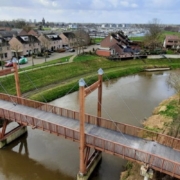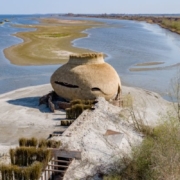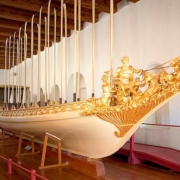In the heart of Rotterdam, two ship carpenters are manufacturing new oars for the Dutch Royal Sloop. In order to be able to sail again with the almost two-hundred-year-old 'Golden Carriage on Water', Hoogstad Scheepstimmerwerk and Spant Houtwerk are making twenty replicas of the historic oars. The oars are made from Oregon Pine supplied by Boogaerdt Hout.
Niko Hoogstad and Jesse Kazemier, from Hoogstad Scheepstimmerwerk and Spant Houtwerk respectively, are currently working on the production of twenty new oars for the Dutch Koningssloep. Both carpenters, specialized in ship restoration and carpentry on and in historic vessels, make the oars almost identical to the old Royal oars.
The new oars are made from specially selected Oregon pine, supplied by Boogaerdt Hout. This wood is resilient, dimensionally stable, defect-free and has an excellent strength-to-weight ratio. The ship carpenters glue several thin layers of Oregon pine into one beam, from which they form an oar by milling, planing and sanding. This construction ensures a dimensionally stable, durable and light whole.
With the replicas, rowing can be done again in the future with the now restored Dutch King's Sloop. The King's Sloop was built for King William I between 1816 and 1818. The King's Sloop was used several times on official occasions with members of the Royal House: for the first time at the inauguration of King Willem II in 1841 and for the last time at the silver wedding anniversary of King William I. Queen Juliana and Prince Bernhard in 1962.
After a major overhaul, the Royal Barge will soon be exhibited again in the Maritime Museum. The new oars are expected to be ready by mid-March.
See also Rowing Oars King's Sloop on Facebook, www.scheepstimmerwerk.nl and www.spanthoutwerk.nl.








